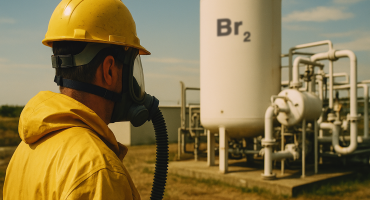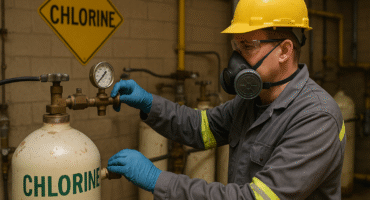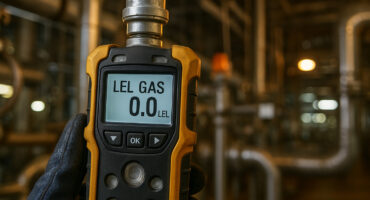Spent mushroom compost has many applications, often used as a specific, organic fertiliser for plants and veg growers alike as the discarded waste has many nutrients. Perfect for gardening and soil enrichment or any land application. Ironically mushroom compost does not contain any mushrooms, it’s the discarded compost that mushrooms are grown in. Mushroom compost is often packed full of mycelium, the root structure of mushrooms. Once used the nutrients are no longer present and risk contamination or a poor crop if used again.
In a lot of cases spent mushroom compost is left to compile in storage sites, stockpiled and later spread on agricultural land. During this period mushroom compost often is exposed to an anaerobic process, meaning there is no air flow. Since the mushroom compost cannot aerate, pockets of H2S concentrations can build up.
As the discard begins to break down the temperature of the material rises and moisture levels rise creating bacteria. The larger the pile of spent compost the higher the temperature and moisture content leading to higher concentrations of H2S.
During a Teagasc report, they were able to directly link heavy rainfall with high concentrations of H2S and recommend storing discarded mushroom compost indoors
Stored Mushroom compost is subject to EU Nitrates Directive 91/676/EEC to protect waterways against pollution. It’s been noted in a study performed by Teagasc that concentrations of over 2000 ppm have been detected at outdoor sites during tests and the older the compost the higher the concentration of H2S (2).During the same Teagasc report there were reports of up 250 ppm identified within the cab of tractors and machinery. Anything over 100 ppm is considered a risk to health.
It is suggested to have smaller heaps when storing mushroom compost and to ensure that safety protocols are in place to alert staff when in high-risk situations of exposure to emissions occur. This may be during the removal or disturbance of the compost at indoor or outdoor locations.
Exposure to H2S can have life-threatening implications and in certain circumstances can lead to fatalities. In 2005 a fatality occurred in the mushroom industry in Ireland (1). In a lot of cases low-level exposure can cause side effects that may not be immediately obvious, the gas may not be detectable by the human nose at certain levels making it a very dangerous gas to be in the vicinity of and an occupational health hazard. At low levels it has a rotten eggs odour and at high levels it often has an almost sweet smell, however at around 100 ppm it may have no smell. This is often the level employees may be exposed to in tractor cabs. Having gas monitors available will ensure you and your employees are protected from the potential risks of hydrogen sulphide as well as correct management and operations at storage facilities.
View the BW Clip here: BW Clip 2yr Real Time | OBW Technologies
From the Blog



If you have any questions about our products or services, please feel free to contact us.